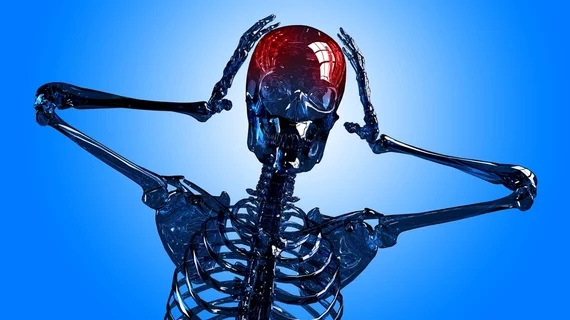AI model slashes cerebral aneurysm interpretation times
Experts recently developed a deep learning-based model that improves radiologists’ performance in detecting cerebral aneurysms.
Not only did the model increase detection rates, but it also decreased both interpretation and post-processing time. Researchers involved in its development signaled that similar tools could have great utility in enhancing clinical workflows and improving the diagnosis of cerebral aneurysms, which can be deadly if they rupture.
“Timely and accurate diagnosis is crucial for initiating appropriate management strategies, optimizing patient outcomes, and reducing the burden of this condition on individuals and the healthcare system,” corresponding author Jianing Wang, PhD, with the Department of Radiology at the Affiliated Hospital of Hebei University in China, and co-authors noted. “Therefore, the development of efficient diagnostic tools is crucial.”
Researchers trained the model on data from nearly 4,000 patients across 11 centers, testing it on an additional 484 patients. For their analysis, the team had 10 radiologists conduct reads on each of the cases both with and without the use of the model, while an additional assessment reviewed the performance of the model alone.
When the radiologists utilized the tool, interpretation and post-processing times decreased by 37.2% and 90.8%. DL assistance improved AUC from 0.842 to 0.881 for junior radiologists and 0.853 to 0.895 for senior radiologists. Sensitivity at the lesion and patient level also benefited from DL assistance, as did specificity at the patient level.
“Given the intricate nature of intracranial vessels, CTA-based aneurysm detection is a time-consuming and challenging task,” the authors noted. “Moreover, the escalating demand for CTA examinations may lead to radiologist fatigue, which, along with the subjective nature of image interpretation, often compromises diagnostic accuracy.”
The group added that their tool provided evidence to support that DL-based models can be adaptive, as their model was accurate across a wide range of exams. This addresses the common issue of generalizability with DL tools. Similar models could be especially beneficial for less experienced readers in settings where prompt diagnosis is critical.
The study abstract is available here.

